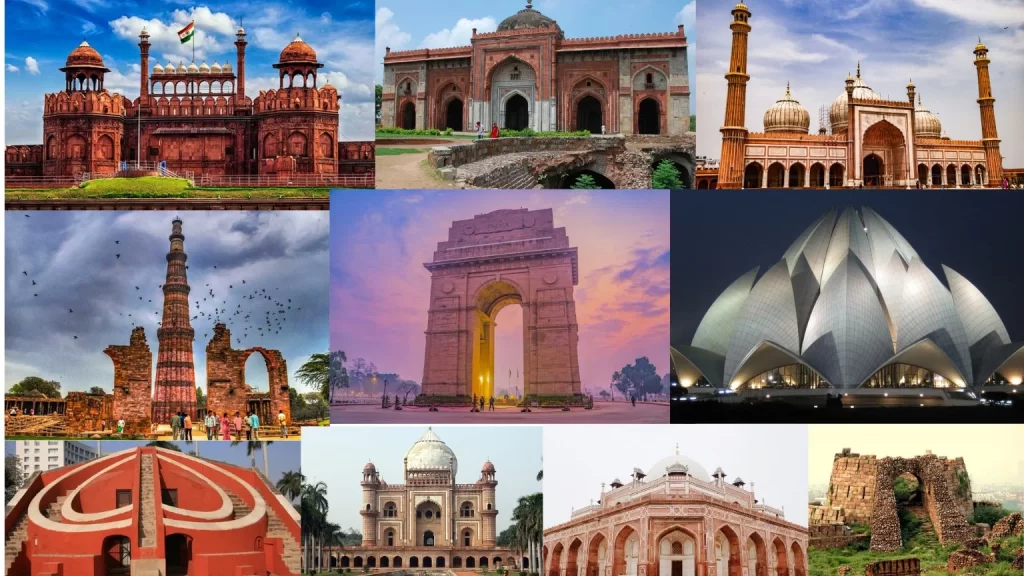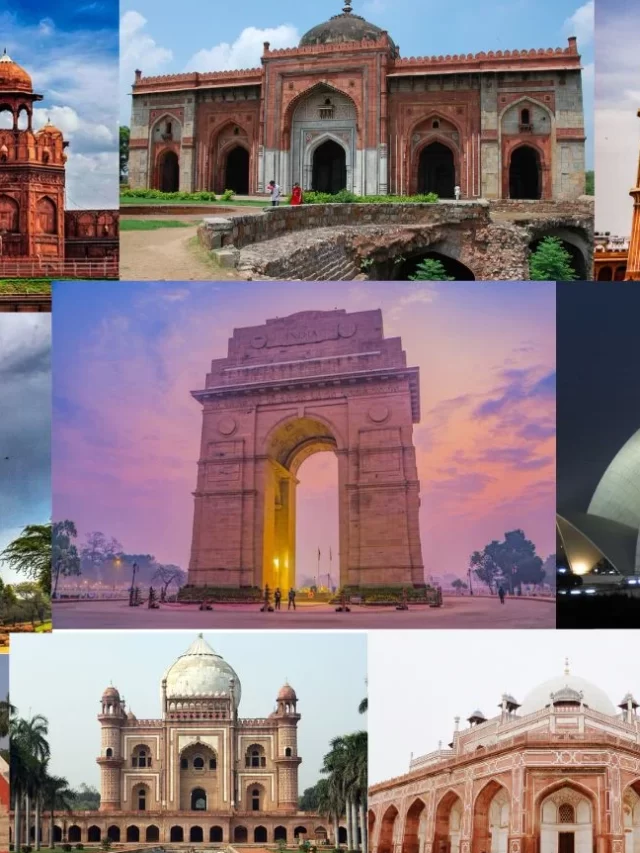Beautiful Monuments in Delhi
Delhi, the bustling capital of India, is a treasure trove of historical monuments that span centuries of architectural marvels and cultural significance. From grand forts to serene temples, each monument tells a unique story about India’s rich heritage. In this guide, we’ll explore some of the most notable monuments in Delhi, highlighting their historical context, architectural features, and the dynasties that built them.
1. India Gate
The construction of the iconic India Gate began in 1921 and finished in 1931. During the British Colonial regime, His Royal Highness, the Duke of Connaught laid the foundation of the monument, while Sir Edwin Lutyens designed it. India Gate is a majestic war memorial built in honour of the soldiers who died in World War I. Its design is inspired by the Arc de Triomphe in Paris, with an imposing 42-meter high arch and intricate bas-reliefs.

2. Qutub Minar
The construction of Qutub Minar began in 1192 under Qutb-ud-din Aibak, the first Sultan and first Muslim ruler of Delhi. It ended in 1368 under the regime of Firoz Shah Tughlaq. Standing at 73 meters, Qutub Minar is the tallest brick minaret in the world. Its ornate carvings and inscriptions in Arabic, along with the red sandstone construction, highlight the artistic excellence of the Mamluk Dynasty.

3. Jama Masjid
The Jama Masjid was built between 1650 and 1656 by emperor Shah Jahan. It was designed by architect Ustad Khalil during the Mughal Dynasty. The Jama Masjid, one of the largest mosques in India, showcases Mughal architecture with its grand domes, minarets, and an expansive courtyard that can accommodate thousands of worshippers. The mosque is built with red sandstone and white marble.
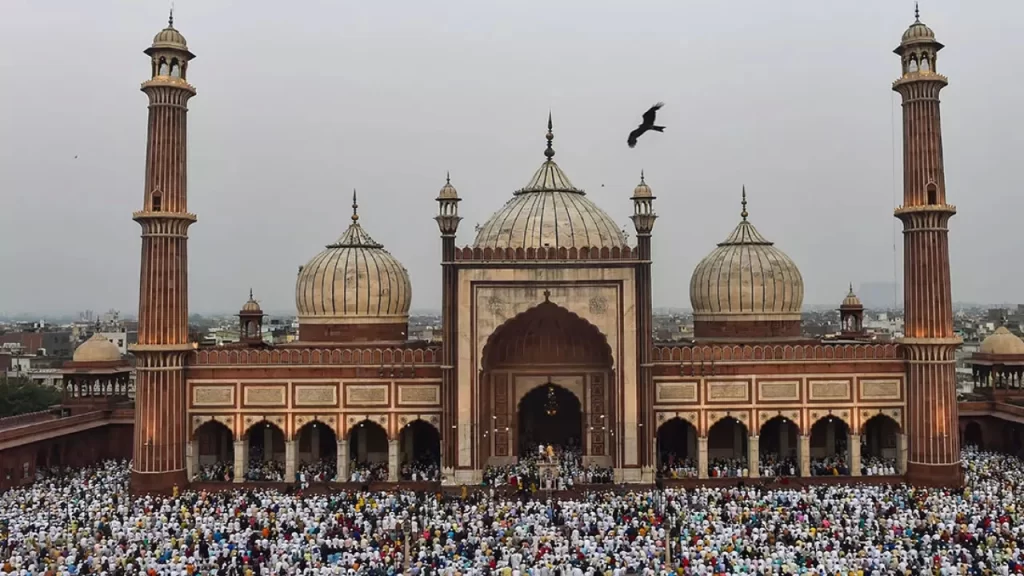
4. Lotus Temple
The Lotus Temple was constructed between 1977 and 1986 by Fariborz Sahba. This Bahá’í House of Worship, shaped like a lotus flower, is renowned for its unique and modern architectural design. Its 27 petal-like structures made of white marble represent purity and tranquillity.
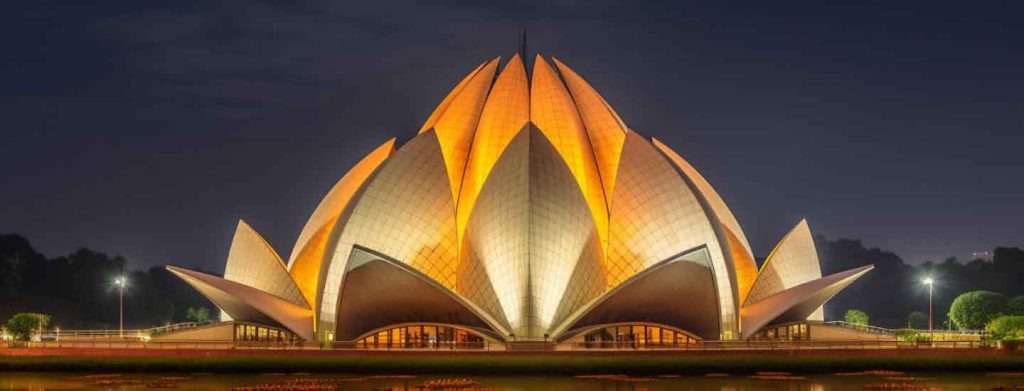
5. Red Fort
The Red Fort was constructed between 1638 and 1648 by Ustad Ahmad Lahori. A UNESCO World Heritage Site, the Red Fort features massive red sandstone walls and stunning Mughal architecture, including the ‘Diwan-i-Aam’ and ‘Diwan-i-Khas’ halls. It served as the main residence of the Mughal emperors. Mumtaz Mahal is located within.

6. Humayun’s Tomb
The Humayun Tomb was constructed between 1565 and 1572 by Mirak Mirza Ghiyas. It houses the tomb of the Mughal emperor Humayun. Humayun’s Tomb is a magnificent example of Mughal architecture with its imposing dome and intricate gardens. The tomb’s Persian-style layout influenced the later design of the Taj Mahal.

7. Lodhi Gardens
The Lodhi Gardens were constructed in 1494 by Sikandar Lodhi. This historic park contains several tombs and structures from the Lodhi Dynasty. The gardens provide a serene escape with its lush greenery and historical ruins. The Lodhi Tomb was built between 1517 and 1518 by his son Ibrahim. It is an elegant structure featuring Mughal architectural elements. It is part of the Lodhi Gardens and reflects the style of the Lodhi Dynasty.

8. Akshardham Temple
The Akshardham Temple was constructed in 2005. It was designed by Pramukh Swami Maharaj and the BAPS Swaminarayan Akshardham Temple. This contemporary Hindu temple is renowned for its intricately carved marble and sandstone, depicting various deities and cultural themes. The Akshardham Temple complex also features an impressive central dome and beautiful gardens.
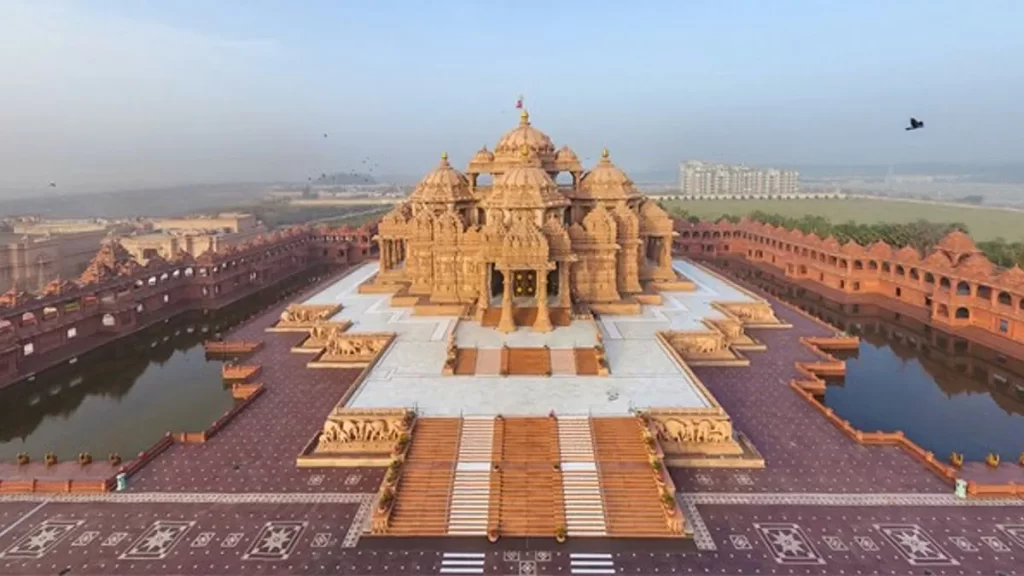
9. Jantar Mantar
The Jantar Mantar was constructed in 1724 by Maharaja Jai Singh II of the royal Rajput Dynasty. Jantar Mantar is an astronomical observatory built with large-scale instruments for measuring celestial positions. Jantar Mantar’s unique structures, including the Samrat Yantra, are renowned for their scientific precision and architectural ingenuity.

10. Agrasen ki Baoli
Agrasen ki Baoli was built in the 14th Century under the Lodi or Tughlaq regime. Some believe that it was built by the fabled king ‘Agrasen.’ This ancient stepwell, with its 103 steps and arched corridors, served as a water reservoir and gathering place. Agrasen ki Baoli’s geometric symmetry and historical ambience make it a captivating site.

11. Hazrat Nizamuddin Auliya
The Hazrat Nizamuddin Auliya was constructed in 1325. The dargah of Hazrat Nizamuddin Auliya. The architecture reflects the Sufi tradition with intricate tilework and serene courtyards.

12. Purana Quila
The Purana Quila was built by the Humayun and Sher Shah Suri between 1533 and 1545 within the fortified city of ‘Din Panah’ or the ‘Sanctuary of Faith.’ Also known as the Old Fort, Purana Quila features massive walls and gates with a mix of Mughal and Afghan architectural styles. The fort’s imposing structure and historical significance make it a notable landmark.

13. Hauz Khas Fort
The Hauz Khas Fort was constructed in the 13th Century under the regime of Alauddin Khilji. The Hauz Khas Fort, with its remnants of a large water tank and medieval architecture, reflects the grandeur of the Khilji Dynasty. Its serene setting by the lake adds to its historical charm.
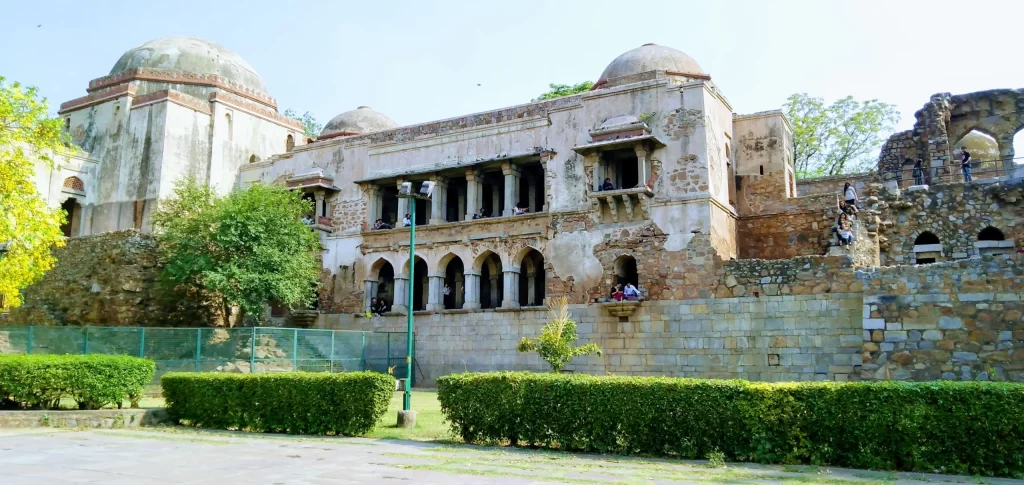
14. Lado Sarai Forts
The Lado Sarai forts were built between the 14th to 18th centuries during the time of the Tughlaq Dynasty. Lado Sarai is known for its historical ruins, including a medieval tomb and remnants of an ancient fortification. The site provides insights into the architectural style of the Tughlaq era.
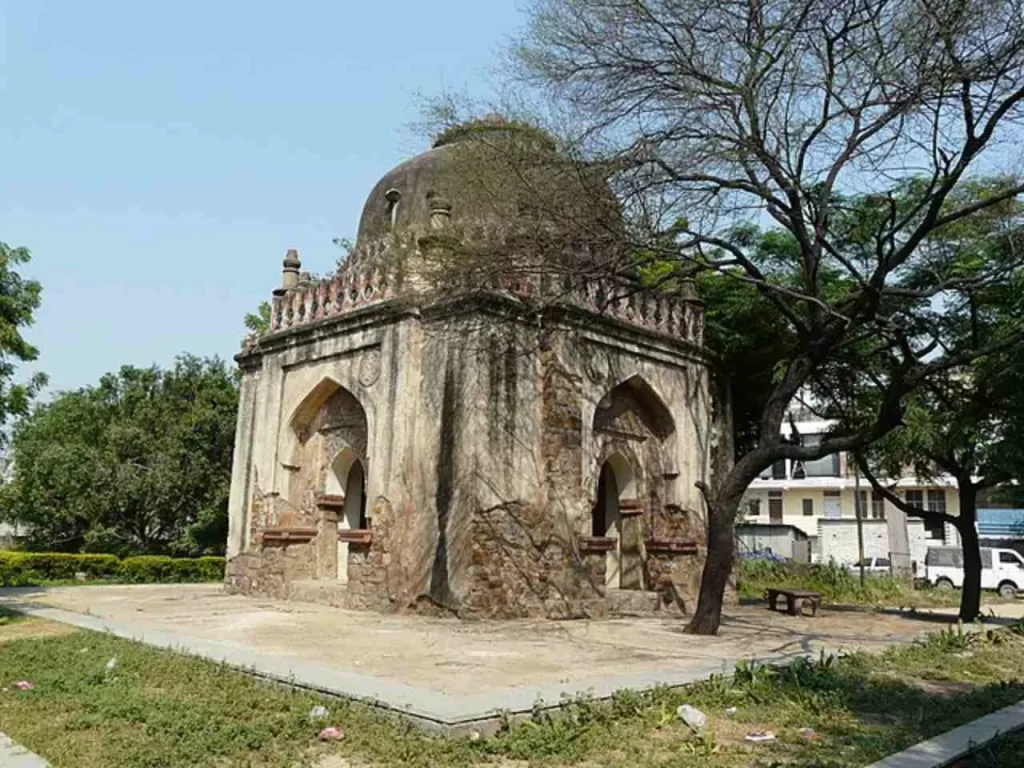
15. Safdarjung Tomb
The Safdarjung Tomb was constructed in 1753-54 by Nawab Shujaud Daula under the rule of the Mughal emperor Mohammed Shah. Safdarjung Tomb is a splendid example of Mughal architecture with its ornate marble tomb and lush gardens. It was built for Safdarjung, a prominent Mughal noble.
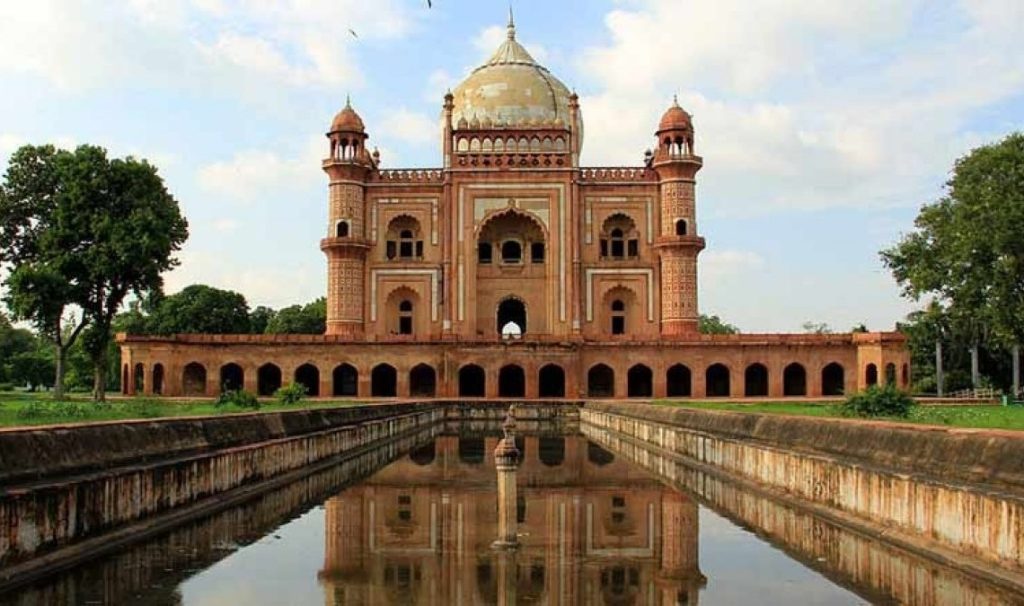
16. Shergarh Fort
The Shergarh fortifications were built in 1540 by Sher Shah Suri. Shergarh, with its fortifications and ruins, exemplifies the military architecture of Sher Shah Suri. The site offers a glimpse into the fort’s strategic design and historical importance.
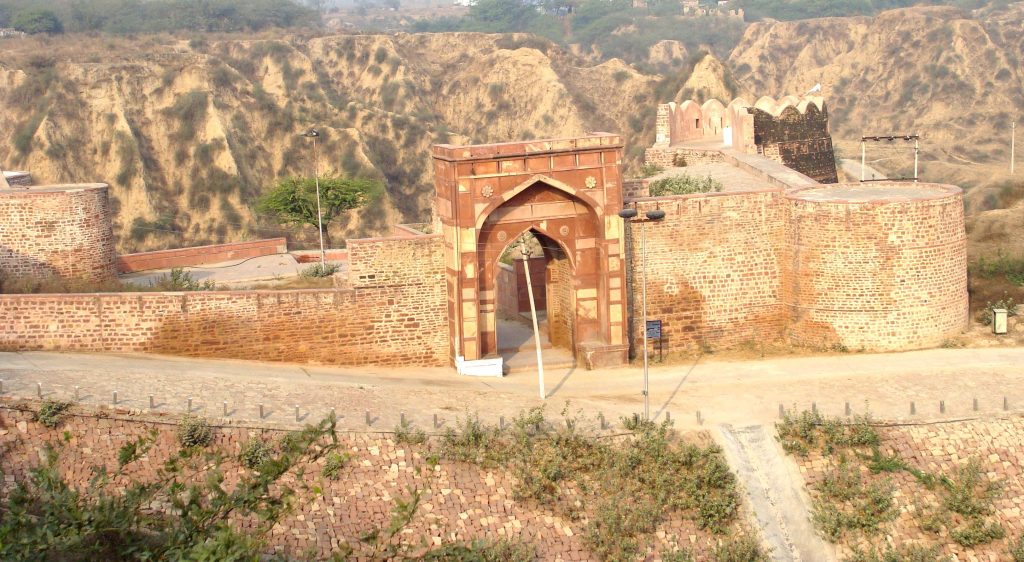
17. Tughlaqabad Fort
The Tughlaqabad Fort was built in 1321 by Ghiyas-ud-din Tughlaq with the architect Ghazi Malik. Tughlaqabad Fort is renowned for its imposing walls and massive fortifications. Built during the Tughlaq Dynasty, the fort’s sheer size and strategic design reflect its military significance.

18. Mehrauli Archaeological Park
The Mehrauli Archaeological Park was constructed during various periods, but the most recent renovation started in 1997. This extensive park features ruins from different eras, including the Qutub Minar complex and various tombs and mosques. The Mehrauli Archaeological Park showcases a rich tapestry of Delhi’s historical architecture.
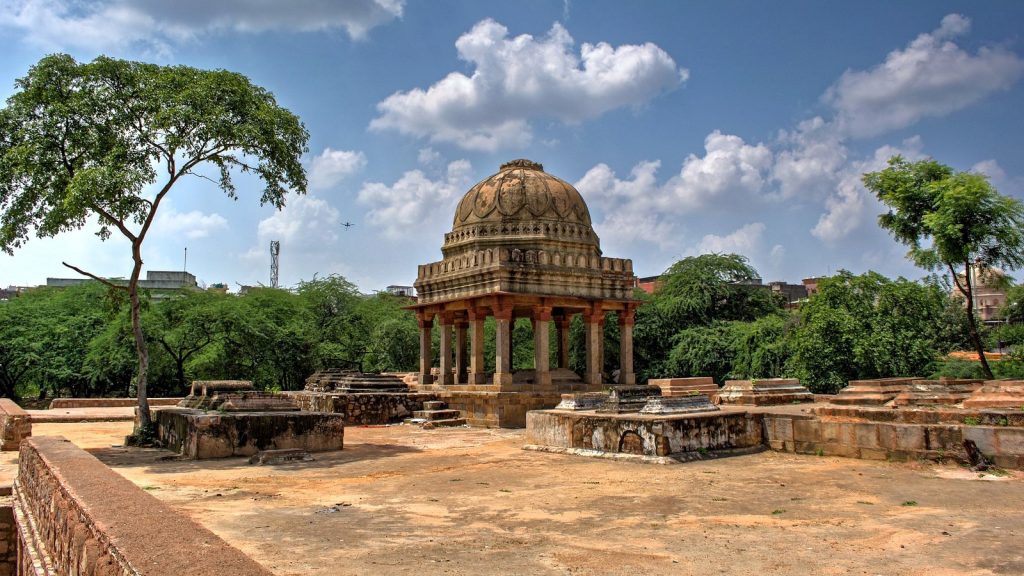
19. Siri Fort
The Siri Fort was constructed between 1303 to 1307 by Alauddin Khilji. Siri Fort is known for its robust defensive walls and remains of a grand city that was once part of the Khilji Dynasty’s architectural endeavours.

20. Alai Minar
The Alai Minar is an incomplete monument in Delhi constructed in 1311 by Alauddin Khilji. The Alai Minar, an unfinished minaret, was intended to be twice the height of the Qutub Minar. Its partially completed structure provides insights into Khilji’s architectural ambitions.
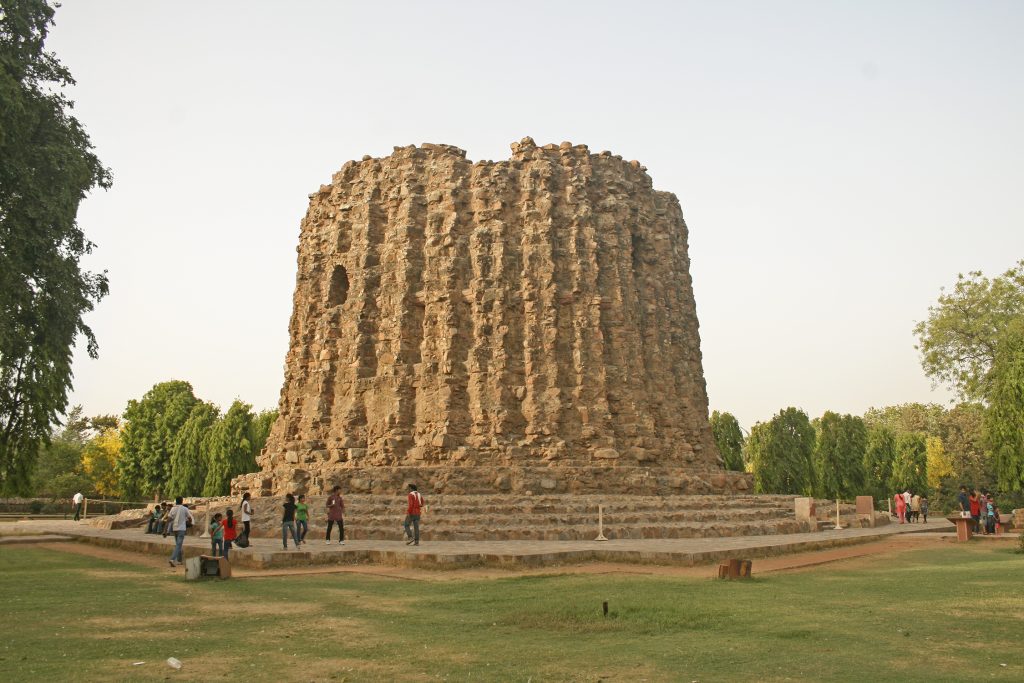
21. Rashtrapati Bhawan
The Rashtrapati Bhawan was built between 1912 and 1929 by Edwin Lutyens. Rashtrapati Bhawan, the official residence of the President of India, combines classical and Indian architectural styles. Its grand dome and expansive gardens reflect the grandeur of British-era design.
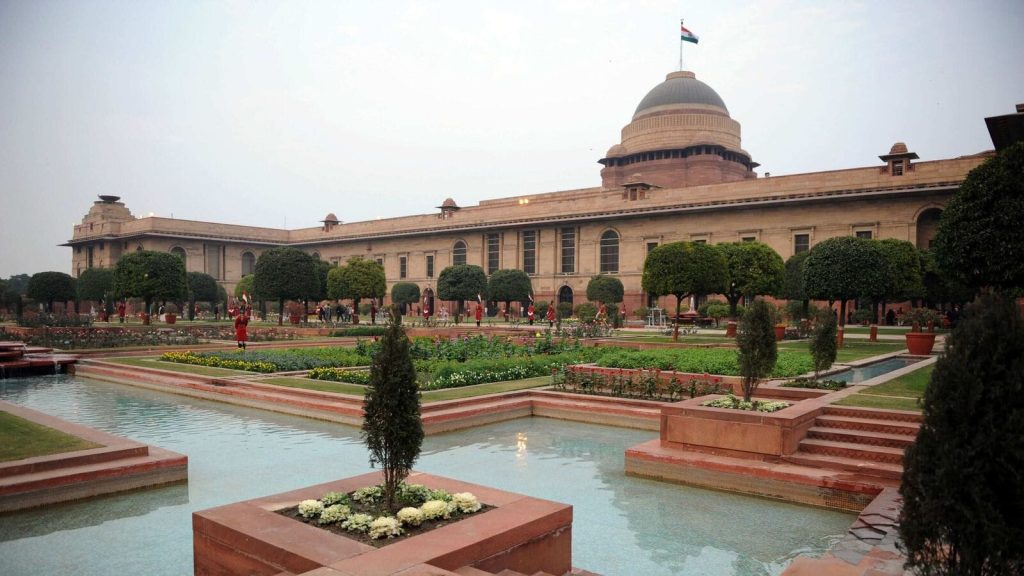
22. Jahanpanah Fort
The Jahanpanah Fort was constructed between 1326-27 by Muhammad bin Tughlaq. Jahanpanah Fort is noted for its extensive walls and strategic layout. Built by Muhammad bin Tughlaq, it was part of the fortifications of the Tughlaq Dynasty.

23. Chhota Qutub Minar
The Chhota Qutub Minar was built by Emperor Shah Jahan near his hunting grounds of Hasthal. It was built in 1650. It originally consisted of five stories with a narrow staircase paving the way for the entry inside. It was also topped by a chhatri.
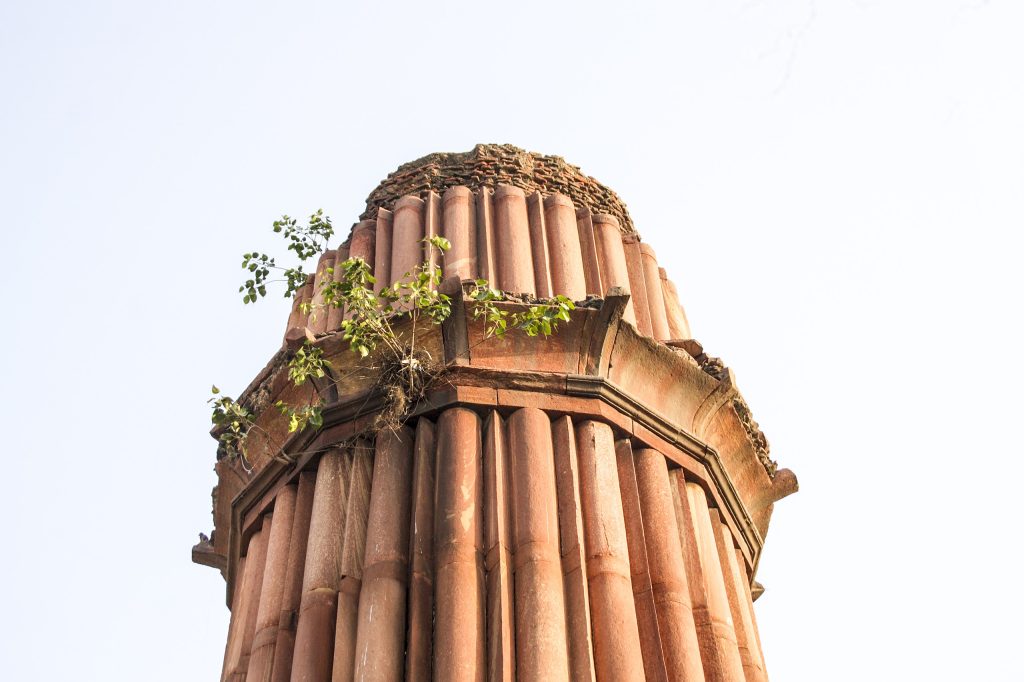
Image Courtesy – The Explore Earth

